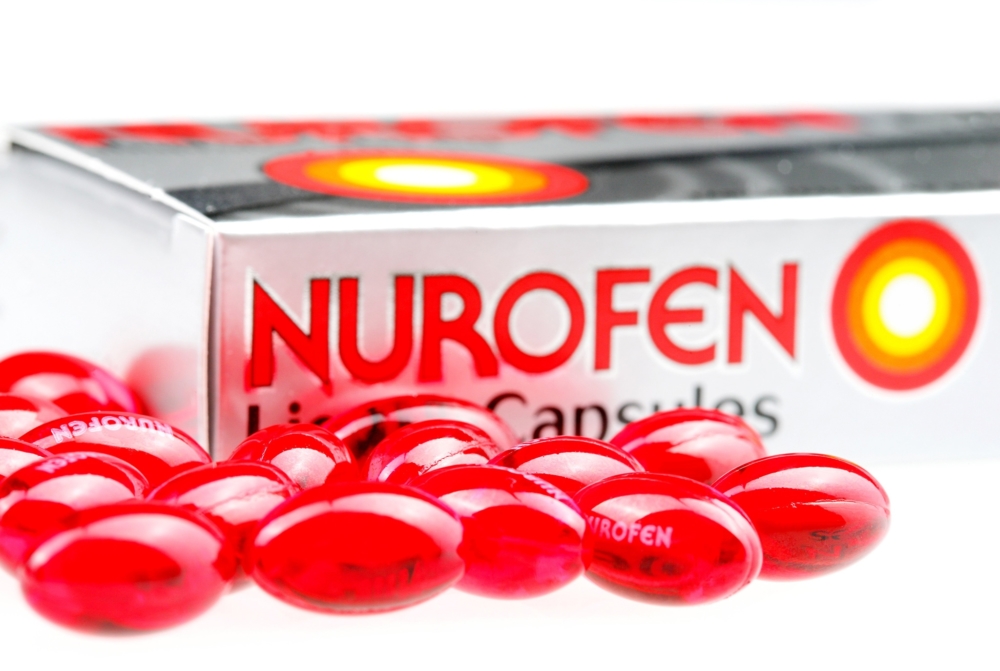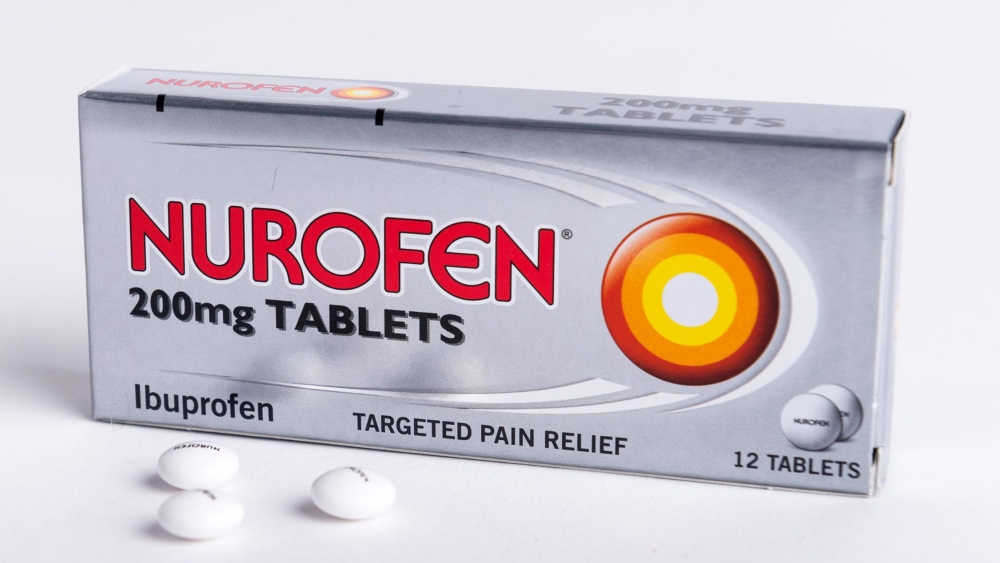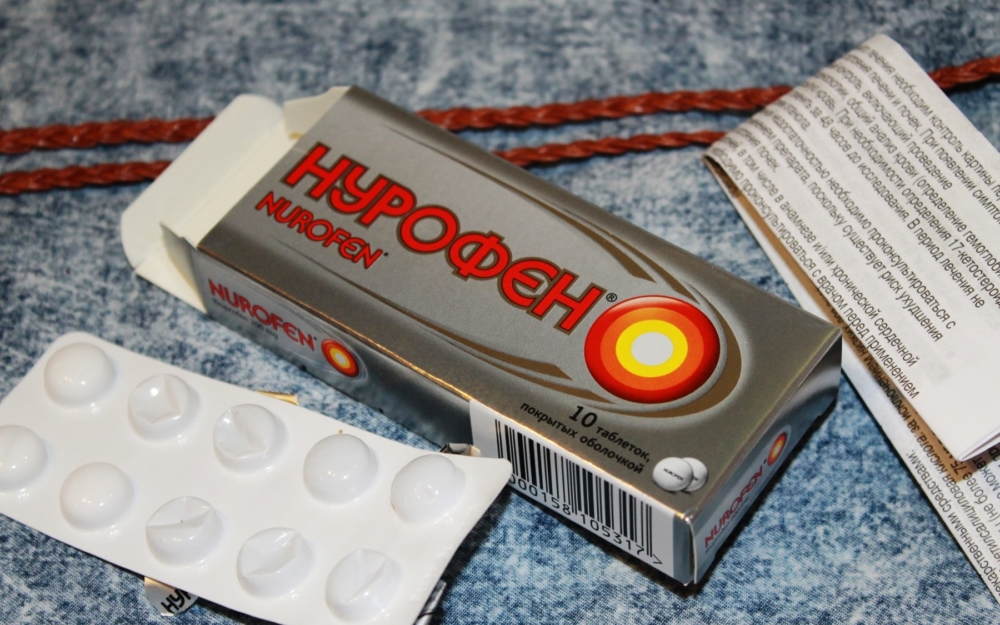Remedies for non-steroidal inflammation are very popular among people of any age. Nurofen also belongs to them, as a part of which there are substances safe for children from 3 months. This allows you to use the drug in pediatric practice to alleviate the condition of the child and relieve unpleasant symptoms.
Material Content:
Types, release forms and composition of the anti-inflammatory drug
The medicine is available in various forms, each of which is suitable for a specific age and purpose of use. Children's Nurofen exists in the form of suppositories for rectal administration with 60 mg of the active substance and syrup with the taste of orange or strawberry with a dosage of 100 mg in 5 ml. The drug is packaged in 10 suppositories in 2 equal blisters and in bottles of 100, 150 and 200 ml with suspension. A syringe dispenser is attached to the liquid form.
The composition of the Nurofen tablets of the classical form of release includes 200 mg of ibuprofen. The drug is packaged in 1-2 blisters, each of which 6, 8, 10, 12 pcs. The medicine is also packaged in 10 and 12 tablets in each of 3 strips or 12 pcs. in 4 records.
A stronger form is Nurofen Forte. These are tablets with a dosage of 400 mg of the active ingredient. And the next highest level of effect is called Nurofen Express Forte. It is available in the form of capsules with liquid contents, although the amount of active substance is also 400 mg. A faster effect is due to the fact that there is a solution inside that enters the bloodstream in a shorter period of time than the tablets require.
Nurofen Plus tablets, in addition to 200 mg of ibuprofen, contain 10 mg of codeine. This anti-inflammatory drug is also effective against dry cough. It can be used as a cold remedy.
Gel Nurofen refers to topical medicines. It contains 5 g of the active substance of the total mass of 100 g. The tube contains 50 g of the drug. It is able to penetrate the skin and relieve pain locally, without penetrating the bloodstream.
Attention! The active substance of the drug works as an antipyretic, relieves pain and inflammation.
Ibuprofen is an indiscriminate NSAID, as it inhibits type 1 and 2 cyclooxygenase, which stops the production of prostaglandins. The effect of the drug lasts no more than 8 hours. It is the most persistent in candles and the fastest in liquid forms.
What helps Nurofen
The medicine is among the multifunctional, therefore, it contains a large list of indications. These include:
- toothache, including teething in children;
- heat;
- myalgia;
- headache;
- rheumatic seizures;
- ARI, SARS, flu;
- joint pain
- migraine;
- arthritis;
- pain along the spine;
- neuralgia;
- injuries
- pain during menstruation;
- condition after vaccination.
Depending on the evidence, the release form of the drug is selected. In some cases, it is allowed to combine several types of medicine with one disease. This is especially common for treating children.
Dosage and admission rules for adults and children
Nurofen is prescribed before meals, but in the presence of gastrointestinal pathologies, it is permissible to use while eating. The medicine should be washed down with a small amount of water. The drug is not designed for long courses of treatment and is used as an emergency measure.
The easiest way to dose the drug is in the form of a suppository. They put rectally 1 pc. no more than 4 times a day. It is necessary to pay attention to the age category of the patient, since candles contain different amounts of the active component.
From 12 years and older, solid forms can be used. They are prescribed 1 pc. 3-4 times a day. Strong drugs (Nurofen Express and Forte) are taken only by adults with the same multiplicity. The break between two capsules or tablets should be 6 hours or more.
In some cases, children 6-12 years of age are prescribed medication in the form of tablets in a standard dosage, but the child's weight should exceed 20 kg. For the rest, a suspension of Nurofen is suitable, the dose of which depends on body weight. The required amount of the drug is measured with a special syringe.
The maximum amount of active ingredient per day should not be more than 30 mg / kg. 3 to 6 months (5-7.5 kg) children take 50 mg of the drug 3 times a day, which corresponds to 2.5 ml. From 7.6 kg to 9 kg, the same dose is prescribed, but up to 4 times a day. From 10 to 16 kg use 5 ml of the active substance 3 times a day. From 17 to 20 kg, the dose is raised to 7.5 ml with the same multiplicity. From 21 to 30 kg use 10 ml, and from 31 to 41 kg 15 ml with the same frequency.
The medication should not last more than 3 days. If unpleasant symptoms persist, and the condition worsens, you should seek medical help. A doctor may prescribe a longer treatment with Nurofen, but you should not continue to drink it yourself. This can cause complications or side effects.
The preparation in the form of a gel must be applied to the skin at the site of pain. It is allowed only after 12 years. From 4 to 10 cm of ointment (50 to 125 mg of active ingredient) is applied to the applicator and is evenly distributed over the desired area. The maximum frequency of use is 4 times a day.
Contraindications, side effects and overdose
In some cases, when using the drug, side effects may occur. They are expressed by several symptoms:
- immune pathologies - allergic manifestations, anaphylaxis, bronchospasm and the development of asthma, angioedema, respiratory failure, Lyell syndrome, itching, vasomotor rhinitis, shortness of breath, urticaria, redness, dermatosis of the bullous and exfoliative types, an increase in the number of eosinophils in the blood, Johnson, collapse, increased heart rate, erythema multiforme);
- disorders in the urinary system - acute kidney failure in the stage of decompensation or compensation, swelling, blood and protein in the urine, nephrotic and nephritic syndromes, inflammation of the bladder and interstitium of the kidneys, an increase in the amount of uric acid in the blood, papillary necrosis);
- diseases of the blood system - anemia, including hemolytic and aplastic, pathologies of the formation of blood cells, lack of white blood cells and platelets, lack of granulocytes, fever, ulceration of the oral mucosa, drowsiness, nosebleeds, petechiae, hematomas;
- digestive system diseases - inflammation of the liver, epigastric pain, peptic ulcer, nausea, ulcerative stomatitis, inflammation of the stomach, jaundice, diarrhea or constipation, ulcerative ulcerative colitis, flatulence, vomiting, including blood, perforation of the intestinal wall , blood in the stool, the transition of Crohn's disease to the stage of exacerbation;
- diseases of the nervous system - aseptic meningitis, headaches;
- heart disorders - thrombosis, hypertension, heart failure, edema;
- laboratory changes - a decrease in the concentration of hemoglobin and hematocrit, an increase in the number of liver transaminases, an increase in the time for stopping bleeding, an increase in plasma creatinine, and a drop in blood sugar.
The severity of unpleasant symptoms is directly proportional to the amount of medication taken. The highest risk of their development in elderly patients. Despite the high level of security, the tool has contraindications:
- allergy to one of the components in the composition;
- severe liver, heart, or kidney failure;
- hyperreactivity to salicylates or other NSAIDs;
- history of gastrointestinal ulcerative pathology;
- for tablet forms - age up to 6 years;
- the last trimester of bearing a child;
- pathology of the blood coagulation system;
- internal bleeding of any etiology;
- hemorrhagic diathesis;
- sugar intolerance as part of the drug.
If the patient has contraindications, it is worth replacing the drug with a similar one. If they are absent, but the dosage is incorrectly selected for the patient, symptoms of its excess may occur. These include:
- headache;
- the transition of bronchial asthma to the acute phase;
- bouts of nausea;
- stomach ache;
- fatigue
- noise in ears;
- hyper excitability;
- coma;
- diarrhea;
- digestive bleeding;
- toxic liver damage;
- convulsive syndrome;
- hypotension;
- loss of orientation in space;
- respiratory failure;
- blue skin.
If signs of an overdose are found, you should seek medical help. These symptoms are especially dangerous for children. Therefore, parents need to be careful during treatment.
Analogs of NSAIDs
The drug has several basic analogues that are identical in active component. These include:
- Ibuprofen (in the form of tablets of 200 mg and suspension of 100 mg per 5 ml);
- MIG (in tablet form with a concentration of 400 mg);
- Faspik (coated tablets with 400 mg ibuprofen);
- Ibuprofen-Akrikhin (suspension with a dose of 100 mg in 5 ml).
As an analogue for local use, Diclofenac 5% gel is suitable. It contains another active ingredient, but the effect of the application is similar to that of Nurofen. Before replacing it is worth consulting with a specialist about contraindications.
Nurofen is available in a large number of different dosage forms to meet the needs of any patient. It is approved for use in the youngest children, which indicates the safety of the drug. Replace the original drug with generics on your own is not worth it. Despite the same active substance, they differ in the quality of raw materials and production technology. This may reduce the effectiveness of more budget counterparts.
















